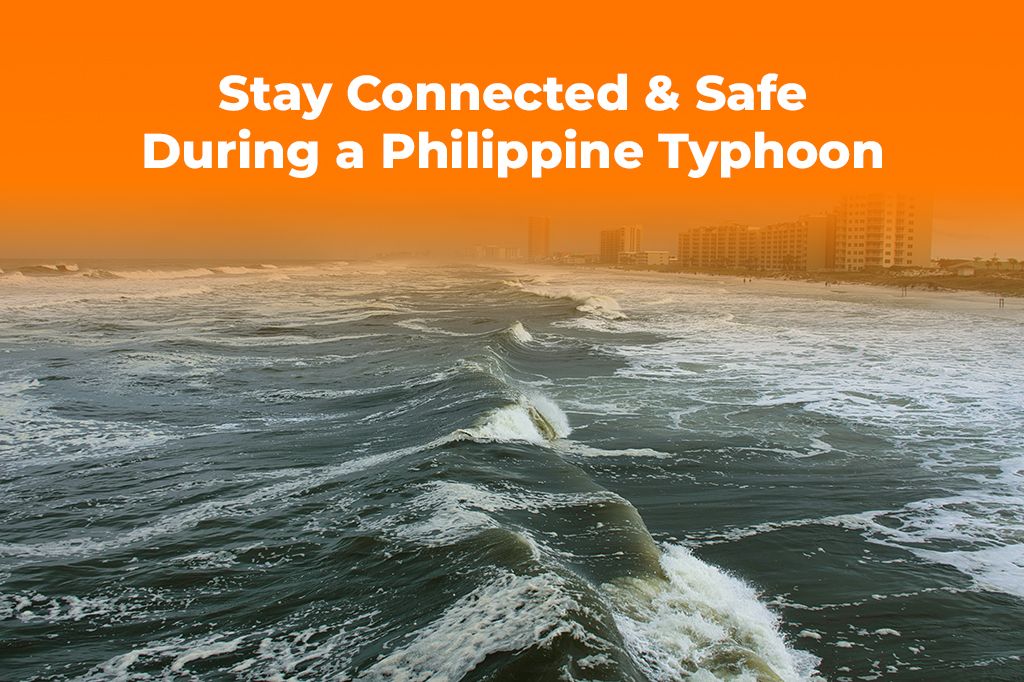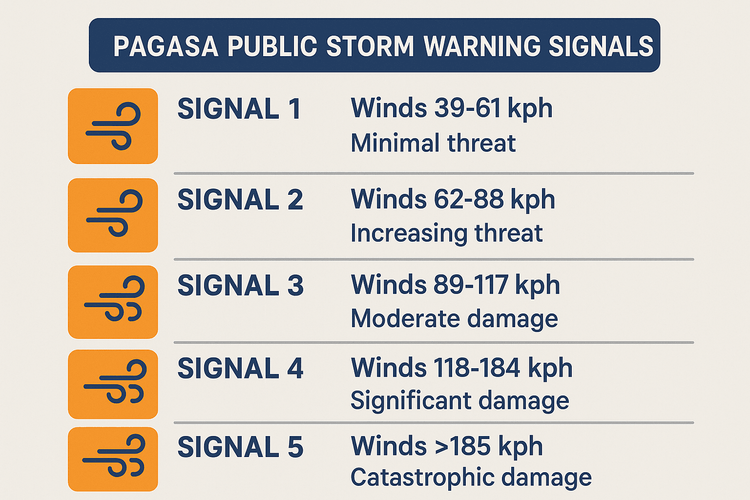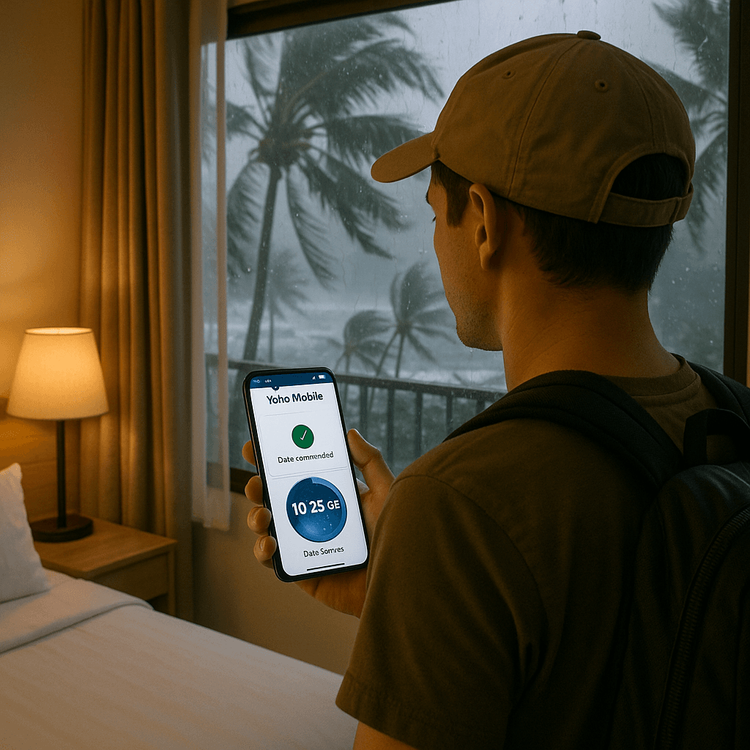The Philippines is a breathtaking archipelago of over 7,000 islands, known for its pristine beaches and vibrant culture. However, its location in the Pacific Ring of Fire also means it’s prone to typhoons, especially between June and November. For any traveler, staying connected during a super typhoon isn’t just a convenience—it’s a critical safety measure. Having a reliable mobile data connection allows you to access emergency alerts, contact loved ones, and navigate to safety. The key is preparation, and that starts with securing your communication line before you even land. Don’t wait until the storm clouds gather; ensure you’re ready with a flexible data plan. Explore Yoho Mobile’s eSIM plans for the Philippines and travel with confidence.

Picture by Craig Cameron on Unsplash
Understanding the Threat: Typhoon Season in the Philippines
Knowledge is your first line of defense. The Philippine Atmospheric, Geophysical and Astronomical Services Administration, or PAGASA, is the official agency that monitors and reports on weather disturbances. They use a system of Public Storm Warning Signals (PSWS) to alert the public about the severity of an approaching typhoon. Understanding these signals is essential for travel safety in the Philippines.
- Signal No. 1: A typhoon is expected in 36 hours. It’s time to be aware and monitor updates.
- Signal No. 2: A typhoon is expected in 24 hours. Small sea vessels are advised to stay in port.
- Signal No. 3: A typhoon is expected in 18 hours. Widespread disruption to travel and power is likely.
- Signal No. 4: A typhoon is expected in 12 hours. The situation is potentially very destructive.
- Signal No. 5: A typhoon is expected in 12 hours. This is the highest level, signaling a catastrophic storm.
Knowing what each signal means helps you make informed decisions, whether it’s changing your itinerary to avoid areas like Cebu or Palawan, or securing your current location in Manila. This proactive approach is a cornerstone of how to prepare for a typhoon in the Philippines.

Before the Storm: Your Digital & Physical Preparedness Checklist
Once a storm is forecast, your preparation window is limited. Taking a few simple steps can make a significant difference in your safety and comfort.
Digital Preparedness
Your smartphone is your most powerful tool. Here’s how to prep it:
- Secure Your Connection: Don’t rely on finding a local SIM card vendor, as stores may close. Install an eSIM before the storm hits. An eSIM can be activated digitally in minutes, giving you instant access to reliable mobile data. Make sure your device is compatible by checking this eSIM compatible list.
- Power Up: Charge your smartphone, power banks, and any other electronic devices fully. A power outage can last for hours or even days.
- Download Offline Maps: Download maps of your area on apps like Google Maps. This allows you to navigate even without an active internet connection.
- Save Emergency Contacts: Store numbers for your embassy, local emergency services (911 in the Philippines), and your hotel directly on your phone.
Don’t wait for an emergency to test your connection. Get a free trial eSIM from Yoho Mobile to ensure your device is ready for your trip.
Physical Preparedness
- Assemble a Go-Bag: Create a small disaster preparedness kit with essentials like bottled water, non-perishable snacks, a first-aid kit, a flashlight, and any necessary medications. The Philippine Red Cross has excellent recommendations for what to include.
- Stay Informed: Follow instructions from your hotel or local authorities. Know the location of the nearest evacuation center.
- Secure Your Location: If you are in a hotel, stay indoors and away from windows. If you are in less sturdy accommodation, consider moving to a more secure building.
Why an eSIM is Your Lifeline During a Typhoon
During a natural disaster, the last thing you want to worry about is your SIM card. Physical SIM cards become impractical when mobility is limited and stores are closed. This is where an eSIM provides a crucial advantage for reliable internet for travelers in the Philippines during storms.

With a Yoho Mobile eSIM, you can download and activate your data plan from the safety of your hotel room. For iOS users, the process is even simpler—no QR codes needed, just a tap to install after purchase. This instant connectivity is vital for receiving real-time alerts from PAGASA and staying in touch with family. Furthermore, using an eSIM on a dual-SIM phone allows you to keep your primary number active for important calls and SMS verifications while dedicating your eSIM to affordable, high-speed data.
Even better, Yoho Mobile offers a unique safety net. With Yoho Care, you remain connected with basic network access even if your main data package runs out unexpectedly. In an emergency, this feature can be a true lifesaver, ensuring you can always send a message or look up critical information.
During the Storm: Staying Safe and Informed
When the typhoon makes landfall, your priorities shift to safety and conserving resources.
- Monitor Official Sources: Use your emergency data to follow updates from PAGASA and reputable news outlets. Avoid spreading unverified information.
- Conserve Battery: Switch your phone to low-power mode. Dim the screen and turn off background app refresh. Use your device only for essential communication and information gathering.
- Use Data Wisely: Messaging apps like WhatsApp and Telegram are the best emergency communication during a power outage as they use very little data. Avoid data-heavy activities like video streaming or large downloads.
- Check Travel Advisories: Keep an eye on official travel advisories from your home country’s government, such as the U.S. Department of State, for guidance and assistance.
Frequently Asked Questions (FAQ)
Q1: Can I still get an eSIM if a typhoon is already approaching?
Yes. One of the biggest advantages of an eSIM is its instant digital delivery. As long as you have a Wi-Fi connection (for example, in your hotel or at the airport), you can purchase and install a Yoho Mobile eSIM in minutes without needing a physical card or visiting a store.
Q2: What should I do if my mobile data isn’t working during the storm?
First, try restarting your phone. If that doesn’t work, go into your mobile settings and manually select a different network partner. Sometimes, one network’s towers may be more affected than another’s. Also, ensure data roaming is turned on for your eSIM profile. If you have Yoho Care, you will still have a basic connection even if your plan is depleted.
Q3: How much data do I need for an emergency situation in the Philippines?
For emergency use (messaging, checking news websites, maps), a 1-3 GB plan is often sufficient for a few days. The key is to use it wisely. With Yoho Mobile, you can easily monitor your usage in the app and manually top up with a new plan if you need more data, ensuring you’re always in control.
Q4: Will my phone work if the power is out?
Your phone will work as long as it has battery and the cellular towers in your area have power (they often have backup generators). This is why having fully charged power banks is a critical part of your disaster preparedness kit. Conserving your phone’s battery should be a top priority.
Conclusion
Traveling to the Philippines during typhoon season requires an extra layer of preparation, but it doesn’t have to be daunting. By understanding the official storm warnings, preparing both your physical and digital toolkits, and securing a reliable form of communication, you can navigate the situation safely. A Yoho Mobile eSIM is more than a travel accessory; it’s an essential safety tool that provides instant, dependable connectivity when you need it most. Paired with the peace of mind offered by Yoho Care, you can be confident you’ll never be left disconnected.
Ready to travel to the Philippines with peace of mind? Explore our flexible eSIM plans for the Philippines today and stay connected, no matter the weather.
